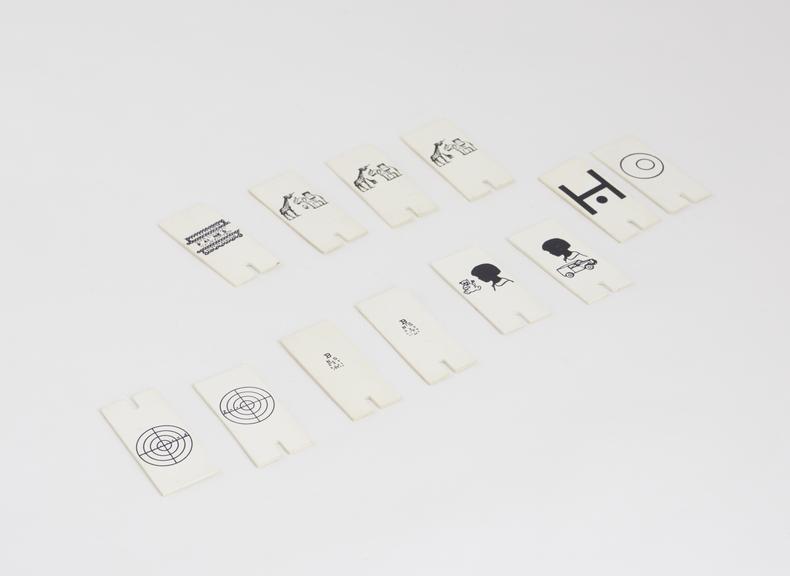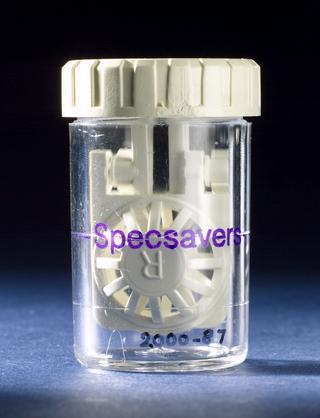Variety of picture cards for Asher-Law stereoscope, London, England, 1960-1968
Stereoscopes were first demonstrated to the Royal Society in 1838 by Charles Wheatstone (1802-1875). They were handheld devices that enabled the viewer to see a 3D image through the viewfinder. This optical illusion was created by placing two slides of the same subject, drawn from different viewpoints, in the holder. The two images merge to form a 3D view.
The picture cards were made by Keeler of London. They show simple images that children would easily recognise such as a giraffe, an elephant and a car.
Stereoscopes were essentially a novelty. However, these picture cards were for use with an Asher-Law stereoscope (A662626) which helped diagnose sight problems. These stereoscopes were developed in the 1950s by ophthalmologists H. Asher and Frank Law (1898-1987).
- Measurements:
-
overall: 55 mm x 25 mm
- Materials:
- plastic
- Object Number:
- A662626 Pt1
- type:
- stereoscope picture
- Image ©
- The Board of Trustees of the Science Museum












